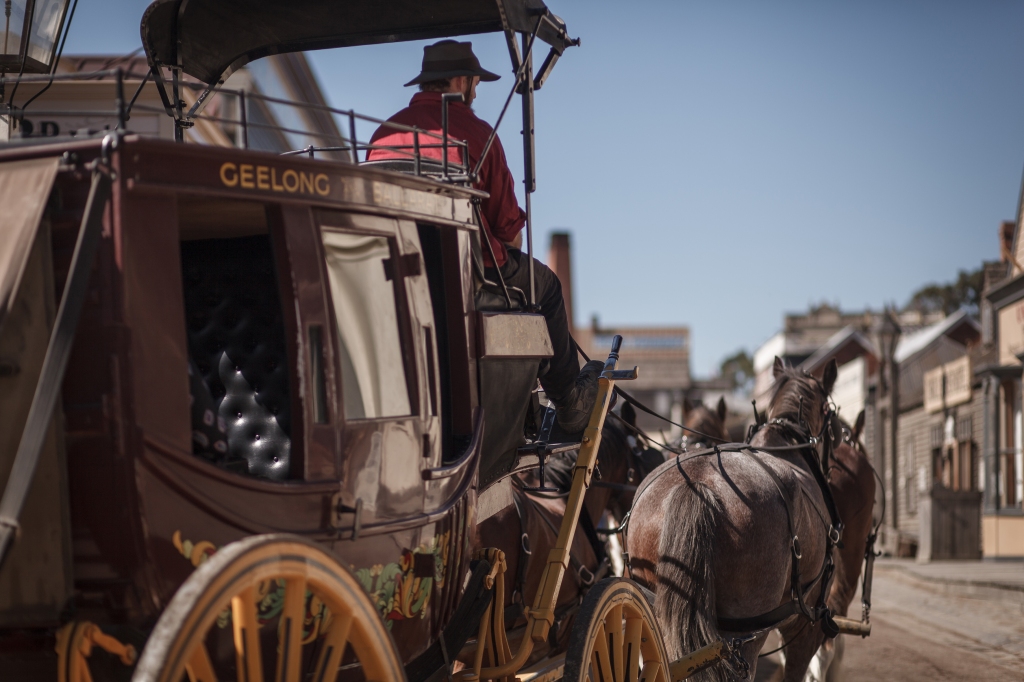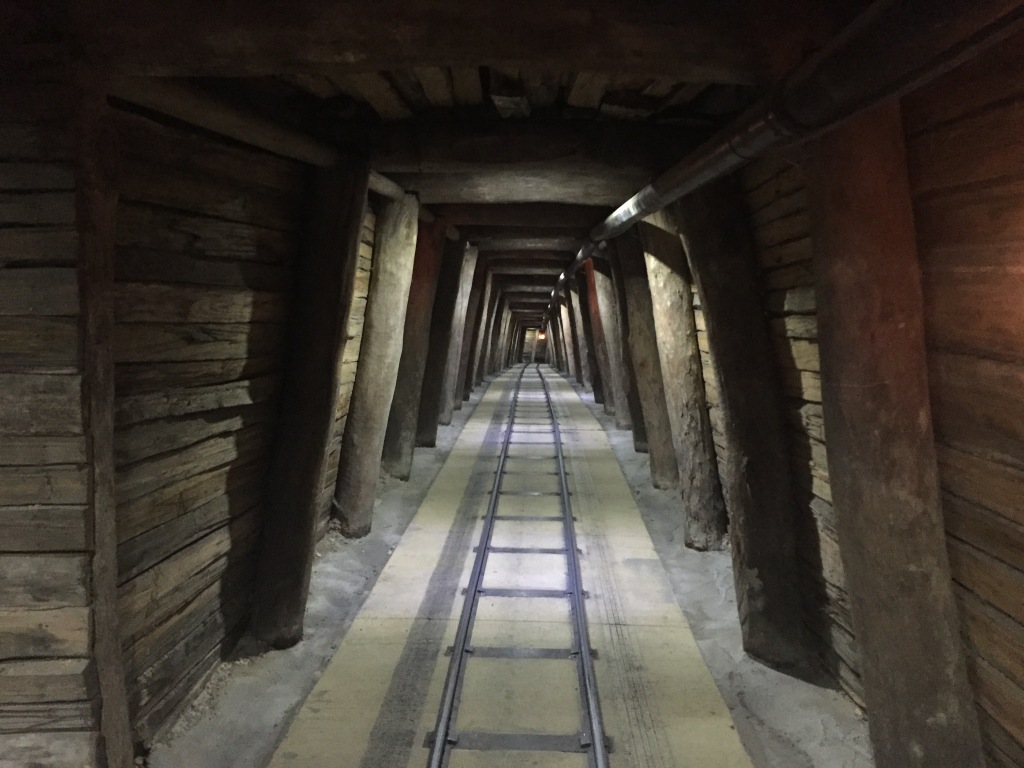There are many great reasons to learn about the past, and that is why The Sovereign Hill Museums Association (SHMA) exists! We aim to “Connect people through our history to adapt for a better future” and “Provide meaningful, immersive experiences that tell stories of our humanity”. To support this purpose and mission, the Victorian Curriculum-aligned education programs presented by our Education Officers focus on learning through inquiry. Some of the key questions that guide our inquiries include:
- Does the past make us who we are today?
- Whose history is it?
- What should stay in the past?
- How has our culture changed over time?
- Were we more sustainable in the past?
Being curious about where we come from helps us understand who we are today, and what our future might hold. Traditionally written History tells stories of individual people and societies from a specific point in time. However, interest in “Big History” (which places humans in a much longer story about the universe and the rise of life on Earth) is growing, as is the valuing of oral history traditions like those treasured by the Wadawurrung people – the Traditional Owners of the region on which this blogpost was written.
While History as an academic discipline has only existed for a couple of centuries, humans have explored themselves and their ancestors through historical stories for hundreds of thousands of years. A Greek writer by the name of Herodotus – who lived during the 5th century BCE – is thought to be the “father of HHistory” in the Western intellectual tradition, but the way we study History has changed much since then and will continue to change long into the future. When a capital “H” is used, the writer is referring to the academic discipline, while using a lower-case “h” indicates something that has merely happened in the past, e.g. “At university I majored in History” and “I like researching my family history”.
Below you will find descriptions of the onsite and online learning opportunities the SHMA makes available to students of all ages. We are particularly excited to share our new – and FREE! – digital learning packages with you, which we launched in 2020. These carefully curated learning packages are designed around the following themes: Colonial Life, 19th Century Migration, Aboriginal People and the Goldfields, Environmental Impacts of the Goldfields, Goldfields Technology, Industrial Revolution, and Early Years Object Based Learning. Each of these packages has an “inquiry” learning approach and can be utilised by teachers and students prior to attending Sovereign Hill, when you return to school after SHMA camp/excursion, or can complement studies of Victoria’s famous gold rushes even if you are unable to visit. You can register for the learning packages here.

While SHMA’s Education Team enjoys reading and writing about history, we think one of the best ways to learn about the past is by immersing our visitors in it. This can involve getting dirty hands on the goldfields like a 19th century miner, exploring artefacts and past technologies with the help of museum experts, eating historical food, or interacting with interpreters in period clothing. The SHMA manages three sites to explore the history of both the Ballarat region and the State of Victoria:
- The Sovereign Hill Living Museum (a historically-immersive timeline experience which tells the story of Ballarat’s famous 19th century gold rush through activated streetscapes),
- Collections (the SHMA cares for more than 150,000 fascinating items which are used to tell the stories of Ballarat, the Victorian goldfields, and the extraordinary impact of the 19th century gold rushes had on Australia),
- Narmbool (a 2,000-hectare sheep farm and school camp facility where visiting schools learn about sustainability, biodiversity and Aboriginal cultural heritage).
When teachers book class excursions/camps with us, our Bookings Officers help you personalise an itinerary that complements what your Foundation to Tertiary students are learning at school. Our Education Team can build rich learning experiences for students studying many topics and academic disciplines – from History to Science, English to Food Studies! We also offer special 1.5hr VCE masterclasses for Australian History, Geography, Business Management, and Health and Human Development students, which are becoming very popular. Most teachers choose one of these education programs for their class, and then add tours, demonstrations and self-exploration time into their itinerary. Discover the full list of exciting learning opportunities the Sovereign Hill Museums Association makes available to student visitors here. Teachers are also welcome to contact our team to discuss the development of a unique education session tailored to the needs of a specific class.
Our Education Officers also make learning resources for students aimed at deepening History knowledge and skills as described in the Victorian Curriculum. Some are specifically designed to help students develop the Capabilities, known in the Victorian Curriculum as Critical and Creative Thinking, Ethical, Intercultural and Personal and Social. We think these skills are crucial for 21st century people to master, and are best developed through studying the Humanities.

In the days before an excursion or camp, students can read blogposts and explore this “Student Resources” webpage. In particular, primary-aged students should watch this video to understand what to expect from a visit to the Sovereign Hill Living Museum. We partnered with ABC Education a few years ago to produce a “digibook” called The Colonisation of the Central Victorian Goldfields, which can also help students contextualise their visit and the stories the SHMA tells.
While onsite at the Living Museum, teachers can make use of the various resources listed on our “Teacher Resources” webpage.
After visiting, students can explore specific resources that relate to the contents of their education session, which are emailed to the teacher that makes the school booking.
Two excellent (and free!) SHMA resources that all schools should use to support learning about colonial Australia are:
- Hidden Histories: The Wadawurrung People – explore the Aboriginal side of the goldrush story through this free “digitour”, for which we have produced supporting primary and secondary teaching kits.
- The Environmental Impacts of the Victorian Gold Rushes – a teaching kit featuring learning activities for Level 3 to VCE students.
The Sovereign Hill Museums Association works hard to bring History to life through both onsite and online experiences, and we hope teachers make the most of our organisation as an educational resource.

When we consider the challenges that lie ahead for humans and our planet, it has probably never been more important to learn about how people in the past have tackled challenges, managed change, and made good decisions. We like this quote from the Australian History Councils’ “The Value of History” publication:
The study of the past and telling its stories are critical to our sense of belonging, to our communities and to our shared future. History shapes our identities, engages us as citizens, creates inclusive communities, is part of our economic well-being, teaches us to think critically and creatively, inspires leaders and is the foundation of our future generations.
Why do you think studying History is important? Please share your thoughts in the comment section at the bottom of this blogpost to get involved in the conversation.
Links and References:
A great article from ABC Education on how History is written and who writes it: https://education.abc.net.au/newsandarticles/blog/-/b/3943916/how-is-history-written-and-who-writes-it-?sf244858353=1
Learn more about Sovereign Hill and the story it tells here: https://sovereignhilledblog.com/2015/03/24/oh-sovereign-hill-is-a-museum/
Understand why learning about Victoria’s gold rushes is valuable: https://sovereignhilledblog.com/2015/10/22/why-do-i-have-to-learn-about-the-goldrush/
Explore the stories artefacts can reveal with the help of this blogpost: https://sovereignhilledblog.com/2016/06/08/the-hidden-stories-in-artefacts/
ABC Education “digibook” called The Colonisation of the Central Victorian Goldfields: https://education.abc.net.au/home#!/digibook/2873696/colonisation-of-the-central-victorian-goldfields A “digitour” of the Aboriginal side of the goldrush story: https://sovereignhillhiddenhistories.com.au/








